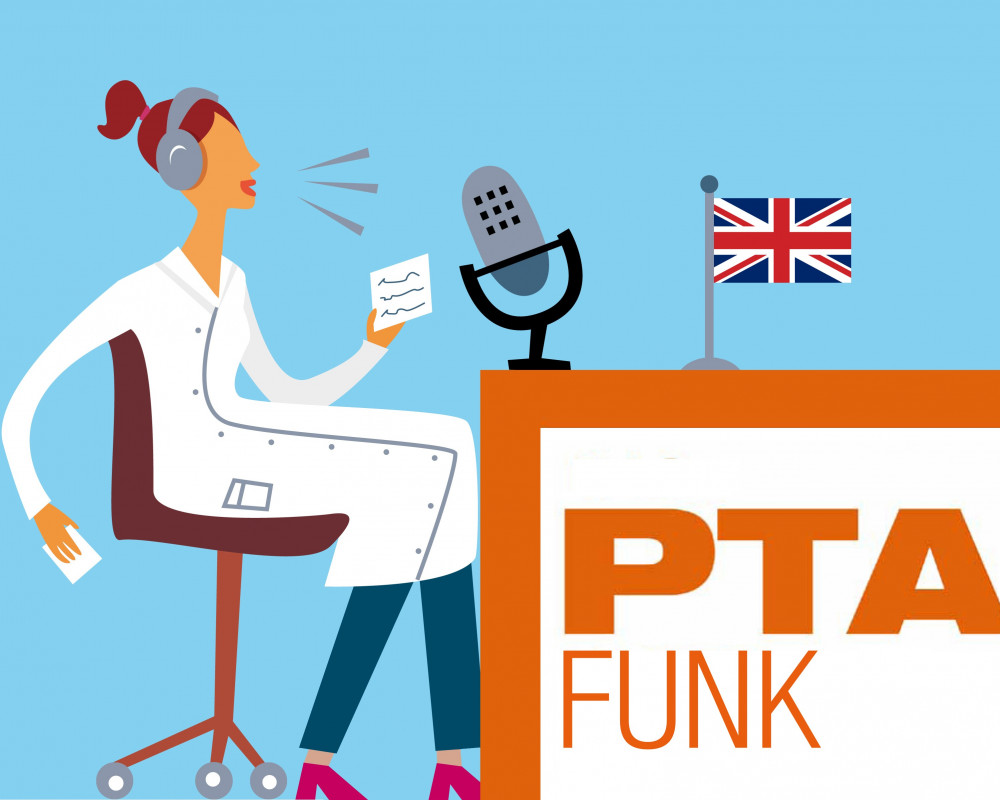Podcast PTA FUNK: Einfach Englisch lernen – Wound Management

Dialogue
Customer: Excuse me, I wonder if you could help me?
PTA: Yes, of course. What’s the problem?
Customer: I had an accident with my e-bike yesterday when a child ran out in front of me. I braked, then fell off and skidded along the pavement. My arm is quite badly grazed. What should I do?
PTA: What have you done so far?
Customer: It was covered in dirt and grit, so I held it under running water, then cleaned the wound with an antiseptic spray and patted it dry with a kitchen towel.
PTA: Have you covered it with anything?
Customer; No. I thought fresh air was best.
PTA: That is a myth that has stood firm for generations but has never corresponded with the professional opinion. Nowadays, it’s common knowledge that using a plaster to protect the wound until it has healed completely is by far the better option.
Customer: It’s quite painful and I’m reluctant to use plasters because they stick to the skin and you can’t get them off again without making things worse. I remember the last time. It was agony and the whole thing opened up again.
PTA: It’s bound to be painful at first because the nerve endings directly under the surface are exposed. Is there any discharge?
Customer: Yes, it’s weeping in places and it’s starting to stick to my sleeve.
PTA: OK, that’s not ideal. It’s best to maintain a moist environment for this type of wound. This minimizes the risk of infection and speeds up the healing process. There are sterile dressings with hydrocolloid gel that can be left in place for several days. They are breathable and eudermic.
Customer: What’s that?
PTA: Non-irritating; friendly to the skin.
Customer: Oh.
PTA: The dressings are slightly padded, waterproof and protect against dirt and bacteria.
Customer: What happens when they’re taken off? Don’t they stick?
PTA: Not at all. There’s no damage to the new skin tissue. If you’d like to show me your arm, I can find a suitable dressing and explain the correct application.
Customer: That would be very kind.
PTA: Do you have diabetes or are you allergic to anything?
Customer: I don’t have diabetes as far as I’m aware but I am allergic to some types of seafood.
PTA: No skin diseases or allergies that affect the skin?
Customer: Well, some plasters cause irritation if I leave them on too long.
PTA: OK, so we’ll need to use the sensitive type. Is your tetanus vaccine up to date?
Customer: Oh yes, I had a booster last year.
PTA: Good.
Customer: Is there anything I need to watch out for?
PTA: Should you develop a temperature or if your arm gets more painful or starts to smell unpleasant, then you should see a doctor.
Customer: Right.
PTA: Then if you’d like to follow me, you can show me your arm and I’ll find a suitable dressing for you.
Customer: Thank you.
Jetzt lesen und fortbilden!
Hier finden Sie den Artikel Wound Management: Pads and Patches aus unserer Serie English for PTA und die passende zertifizierte Fortbildung zu Wundheilung.
Hören Sie PTA FUNK überall
PTA FUNK, der Podcast von DAS PTA MAGAZIN, beleuchtet Themen, die PTA interessieren. Egal, ob zuhause auf dem Sofa oder in der Bahn: Klicken Sie auf unsere Webseite, und hören Sie zu. Natürlich können Sie PTA FUNK auch über Apple Podcast, Spotify, Deezer, Amazon Music und Podimo hören. Diese Episode dauert 4:37 Minuten.